When Will The Universe Get Its First ‘Black Dwarf’ Star?
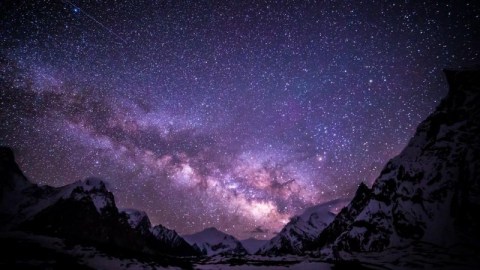
13.8 billion years isn’t close to enough time, but if we wait long enough, even our Sun will become one.
The Big Bang happened approximately 13.8 billion years ago, and it might have only taken 50–100 million years to form the very first stars. Ever since then, the Universe has been flooded with starlight. When enough matter — mostly hydrogen and helium gas — gravitates together into a single, compact object, nuclear fusion must take place inside the core, giving rise to a true star.
But as time goes on and fusion continues, eventually that star will run out of fuel. Sometimes, the star is massive enough that additional fusion reactions will take place, but at some point, it all must stop. Even when a star finally dies, however, their remnants will continue to shine. In fact, except for black holes, every remnant ever created still shines today. Here’s the story of how long we’ll need to wait for the first star to truly go dark.
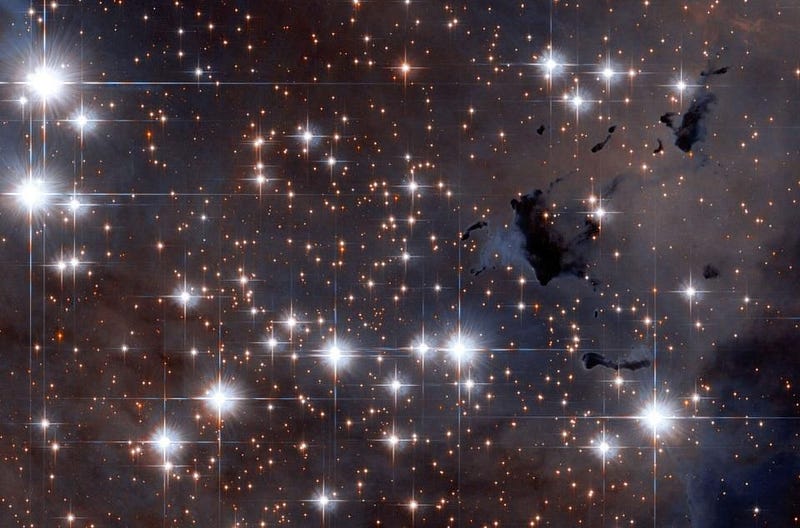
It all begins from clouds of gas. When a cloud of molecular gas collapses under its own gravity, there are always a few regions that start off just a little bit denser than others. Every location with matter in it does its best to attract more and more matter towards it, but these overdense regions attract matter more efficiently than all the others. Because gravitational collapse is a runaway process, the more matter you attract to your vicinity, the faster additional matter will flow inward.
While it can take millions to tens of millions of years for a molecular cloud to go from a large, diffuse state to a relatively collapsed one, the process of going from a collapsed state of dense gas to a new cluster of stars — where the densest regions ignite fusion in their cores — takes only a few hundred thousand years.
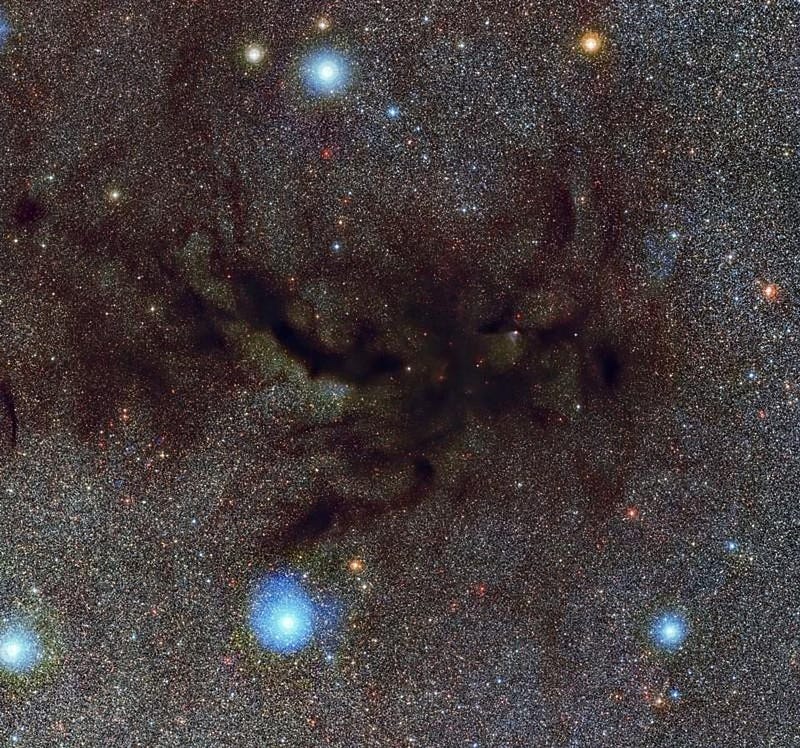
Stars come in a huge variety of colors, brightnesses and masses, and a star’s life cycle and fate are determined from the moment of the star’s birth. When you create a new cluster of stars, the easiest ones to notice are the brightest ones, which also happen to be the most massive. These are the brightest, bluest, hottest stars in existence, with up to hundreds of times the mass of our Sun and with millions of times the luminosity.
But despite the fact that the brightest ones are the stars that appear the most spectacular, these are also the rarest stars, making up far less than 1% of all the known, total stars. They are also the shortest-lived stars, as they burn through all the nuclear fuel (in all the various stages) in their cores in as little as 1–2 million years.
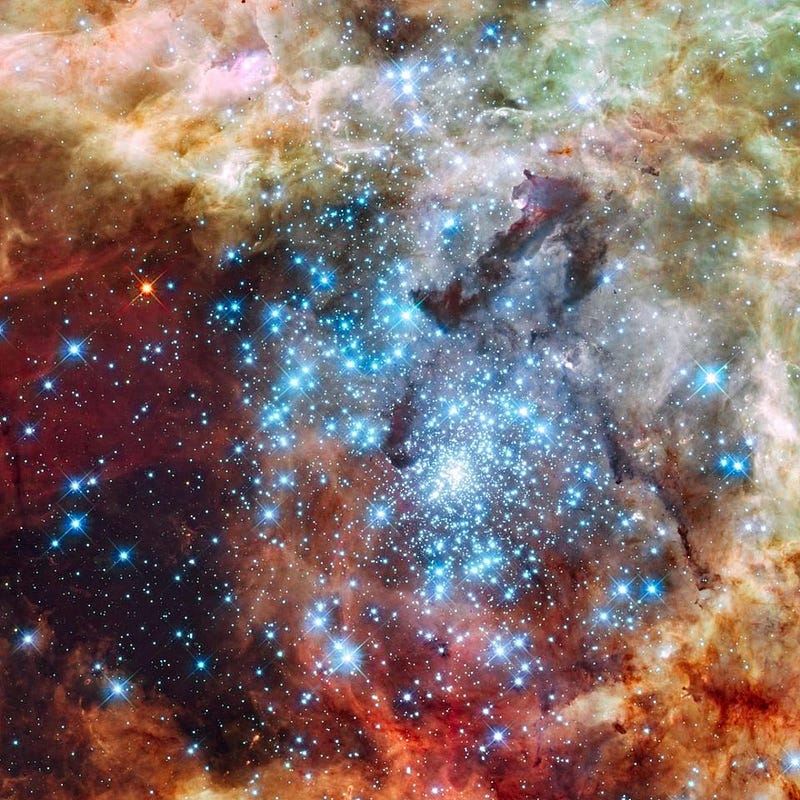
When these stars, the brightest and most massive ones of all, run out of fuel, they die in a spectacular type II supernova explosion. When this occurs, the inner core implodes, collapsing all the way down to a neutron star (for the low-mass cores) or even to a black hole (for the high-mass cores), while expelling the outer layers back into the interstellar medium.
Once there, these enriched gases will contribute to future generations of stars, providing them with the heavy elements necessary to create rocky planets, organic molecules, and in rare, wonderful cases, life. It is estimated that at least six prior generations of stars contributed to the molecular gas cloud that eventually gave rise to our Sun and Solar System.
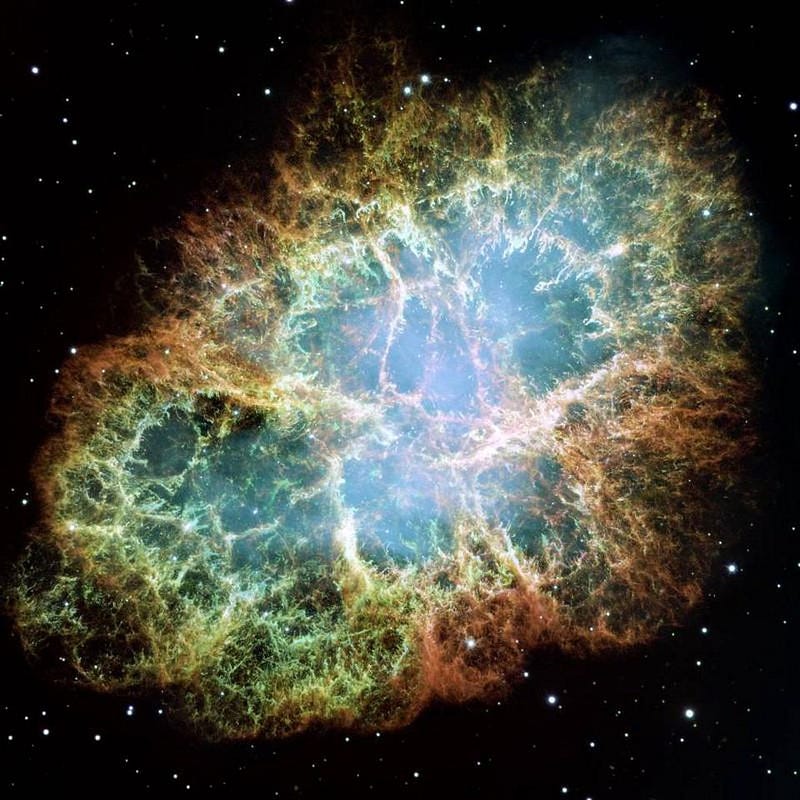
If you form a black hole from the collapse of a supermassive star, you don’t have to wait very long for it to go dark. In fact, by definition, black holes go almost perfectly “black” immediately. Once the core collapses sufficiently to form an event horizon, everything inside collapses down to a singularity in a fraction of a second. Any remnant heat, light, temperature, or energy in any form in the core simply gets added to the mass of the singularity.
No light will ever emanate from it again, except in the form of Hawking radiation, which is emitted when the black hole decays, and in the accretion disk surrounding the black hole, which is constantly fed and refueled from the surrounding matter. But not every massive star forms a black hole, and the ones that form neutron stars tell a vastly different story.
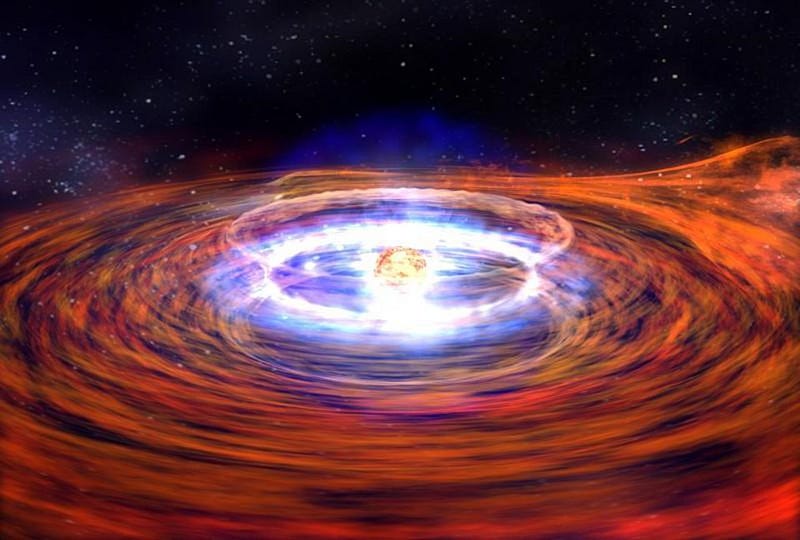
A neutron star takes all the energy in a star’s core and collapses incredibly rapidly. When you take anything and compress it quickly, you cause the temperature within it to rise: this is how a piston works in a diesel engine. Well, collapsing from a stellar core all the way down to a neutron star is maybe the ultimate example of rapid compression.
In the span of seconds-to-minutes, a core of iron, nickel, cobalt, silicon and sulfur many hundreds-of-thousands of miles (kilometers) in diameter has collapsed down to a ball just around 10 miles (16 km) in size or smaller. Its density has increased by around a factor of a quadrillion (10¹⁵), and its temperature has grown tremendously: to some 10¹² K in the core and all the way up to around 10⁶ K at the surface. And herein lies the problem.
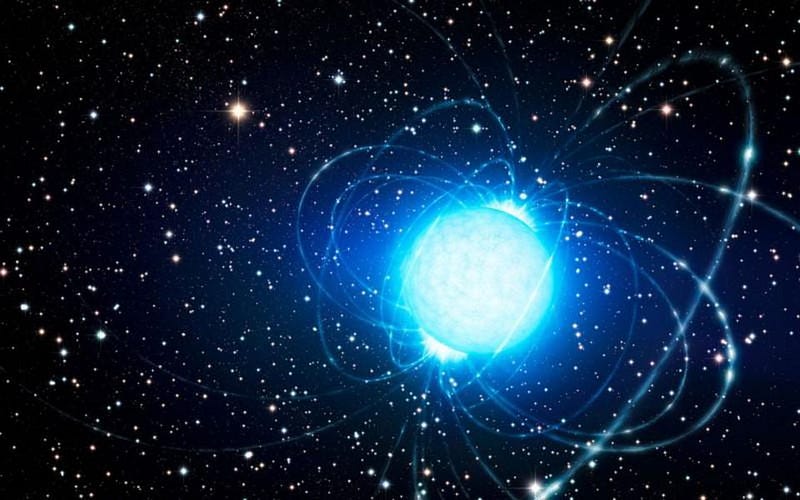
You have all this energy stored within a collapsed star like this, and its surface is so tremendously hot that it not only glows bluish-white in the visible portion of the spectrum, but most of the energy isn’t visible or even ultraviolet: it’s X-ray energy! There is an insanely large amount of energy stored within this object, but the only way it can release it out into the Universe is through its surface, and its surface area is very small. The big question, of course, is how long will it take a neutron star to cool?
The answer depends on a piece of physics that practically isn’t well-understood for neutron stars: neutrino cooling! You see, while photons (radiation) are soundly trapped by the normal, baryonic matter, neutrinos, when generated, can pass right through the entire neutron star unimpeded. On the fast end, neutron stars might cool down, out of the visible portion of the spectrum, after as little as 10¹⁶ years, or “only” a million times the age of the Universe. But if things are slower, it might take 10²⁰-to-10²² years, which means you’ll be waiting for some time.
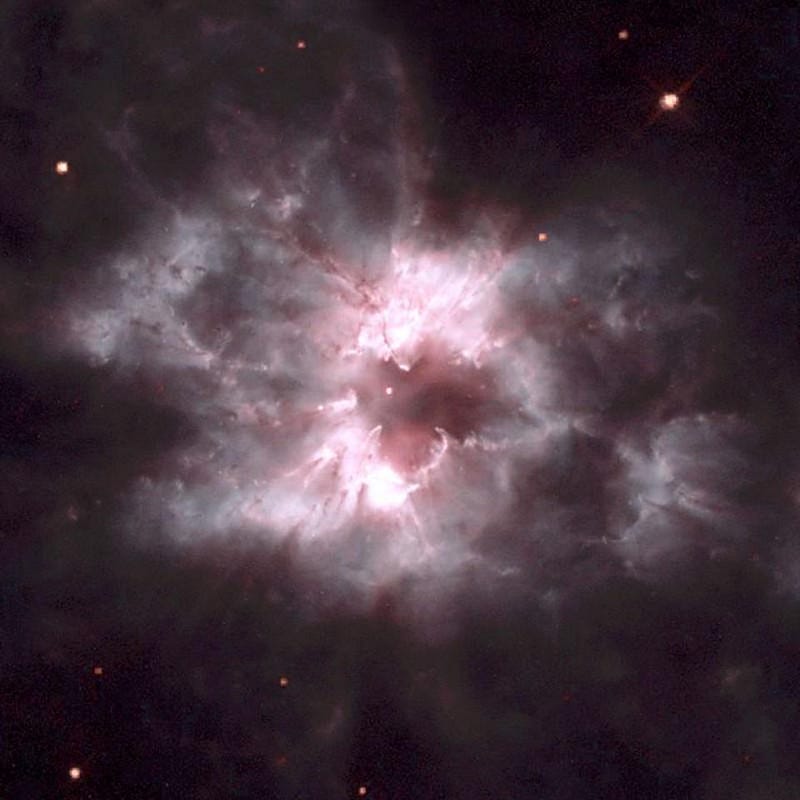
But other stars will go dark much more quickly. You see, the vast majority of stars — the other 99+% — don’t go supernova, but rather, at the end of their lives, contract (slowly) down into a white dwarf star. The “slow” timescale is only slow compared to a supernova: it takes tens-to-hundreds of thousands of years rather than mere seconds-to-minutes, but that’s still fast enough to trap almost all the heat from the star’s core inside.
The big difference is that instead of trapping it inside of a sphere with a diameter of only 10 miles or so, the heat is trapped in an object “only” about the size of Earth, or around a thousand times larger than a neutron star. This means that while the temperatures of these white dwarfs can be very high — over 20,000 K, or more than three times hotter than our Sun — they cool down much faster than neutron stars.

Neutrino escape is negligible in white dwarfs, meaning that radiation through the surface is the only effect that matters. When we calculate how quickly heat can escape by radiating away, it leads to a cooling timescale for a white dwarf (like the kind the Sun will produce) of around 10¹⁴-to-10¹⁵ years. And that will get your stellar remnant all the way down to just a few degrees above absolute zero!
This means that after around 10 trillion years, or “only” around 1,000 times the present age of the Universe, the surface of a white dwarf will have dropped in temperature so that it’s out of the visible light regime. When this much time has passed, the Universe will possess a brand new type of object: a black dwarf star.
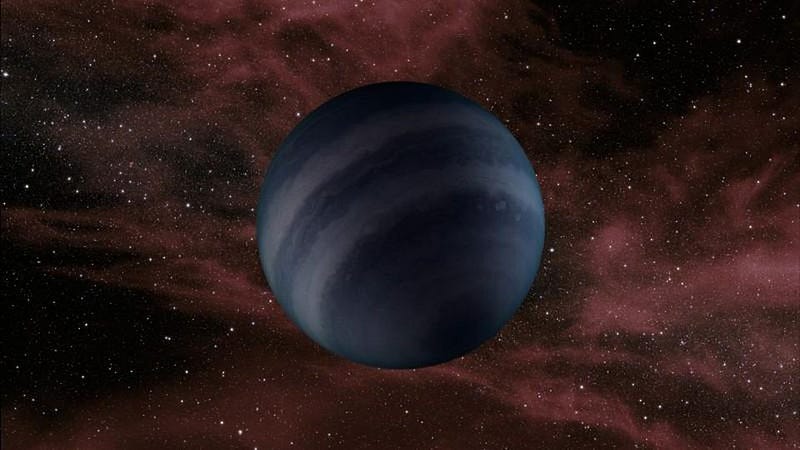
I’m sorry to disappoint you, but there aren’t any black dwarfs around today. The Universe is simply far too young for it. In fact, the coolest white dwarfs have, to the best of our estimates, lost less than 0.2% of their total heat since the very first ones were created in this Universe. For a white dwarf created at 20,000 K, that means its temperature is still at least 19,960 K, telling us we’ve got a terribly long way to go, if we’re waiting for a true dark star.
We currently conceive of our Universe as littered with stars, which cluster together into galaxies, which are separated by vast distances. But by time the first black dwarf comes to be, our local group will have merged into a single galaxy (Milkdromeda), most of the stars that will ever live will have long since burned out, with the surviving ones being exclusively the lowest-mass, reddest and dimmest stars of all. And beyond that? Only darkness, as dark energy will have long since pushed away all the other galaxies, making them unreachable and practically unmeasurable by any physical means.
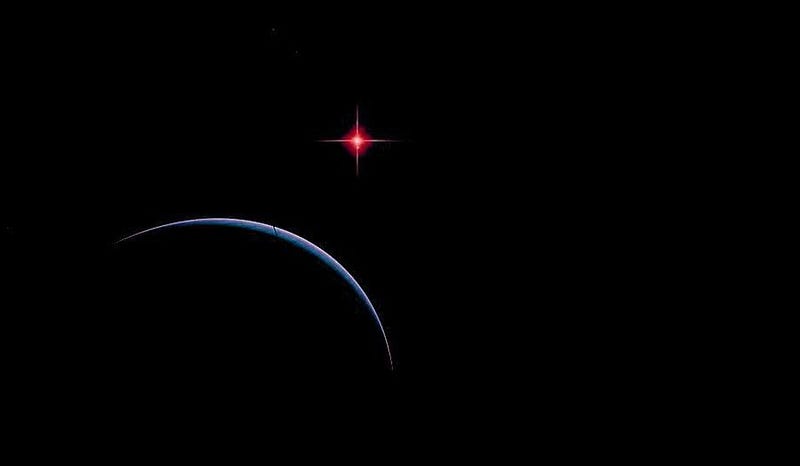
And yet, amidst it all, a new type of object will come to be for the very first time. Even though we’ll never see or experience one, we know enough of nature to know not only that they’ll exist, but how and when they’ll come to be. And that, in itself — the ability to predict the far-distant future that has not yet come to pass — is one of the most amazing parts of science of all!
Ethan Siegel is the author of Beyond the Galaxy and Treknology. You can pre-order his third book, currently in development: the Encyclopaedia Cosmologica.





